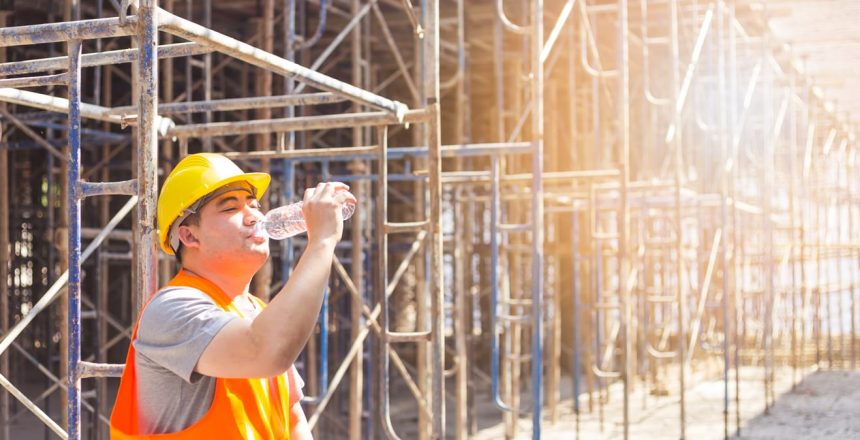There is an expression that says Michigan has two seasons: winter and construction. Therefore, a lot of construction needs to be done during the warmer months, which also means pouring concrete in hot weather. Many factors play a role in the proper way to pour concrete during the summer, but the high temperatures have the biggest effect.
According to experts, the ideal temperature range is 50-60 degrees Fahrenheit for pouring concrete. In the prime summer months of June, July and August, Michigan will average a high temperature in the 80s. This affects more than just the setting time.
With normal weather, it can take anywhere between 8-48 hours for concrete to set. After a week, the concrete will reach around 70 percent strength, and the concrete should be fully cured and will reach its full strength after four weeks. In colder weather, it can take concrete longer to set, whereas concrete can set much quicker in warm weather.
Even though a quicker setting time seems like a great benefit, there are some drawbacks that can severely harm the concrete when poured in hot weather. The American Concrete Institute defines hot weather as “any combination of high ambient temperature, high concrete temperature, low relative humidity, wind speed and solar radiation.”
That hot weather decreases setting time by increasing evaporation of the surface moisture on freshly poured concrete. That surface water is required to keep the concrete from drying out, which leads to surface cracks and shrinkage. Cracks can also come from drastic changes in temperature, such as pouring during a hot day, but setting during a much cooler night.
Hydration is important for the setting process, and there are some adjustments you can make to the concrete to help it set during hot weather. Chemical additives can speed up or slow down the process. For the hot days, consider an additive that will delay the chemical reaction that occurs during setting, which will allow the concrete to have more time to finish.
Temperature within the concrete can be reduced a couple ways. One of them is to incorporate water and ice as part of the mixing process. Another is by cooling the concrete with liquid nitrogen. Between those two options, liquid nitrogen offers more predictability, consistent temperatures, and versatility.
After taking all the precautions to make sure the concrete itself is ready to pour, other factors can be a detriment to the process. To achieve greater success, avoid pouring concrete at the hottest parts of the day, and you can periodically spray the batch with water to keep it cool.
Beating the heat is possible, as long as you can keep your cool when pouring concrete in hot weather. D.C. Byers Company/Grand Rapids can recognize when hot or cold weather has affected concrete, and is qualified to help get that concrete back into great shape.
To get a quote on your concrete restoration needs, call DC Byers Company/Grand Rapids today at (616) 538-7300. Our experience and expertise allow us to assess the damage correctly and plan how to perform the repairs to allow you to use your space properly.
For concrete restoration and repair, DC Byers Company/Grand Rapids looks at all the factors contributing to the deterioration of the concrete. By understanding the underlying problems, we can start working on the most satisfying and cost-effective solutions.
